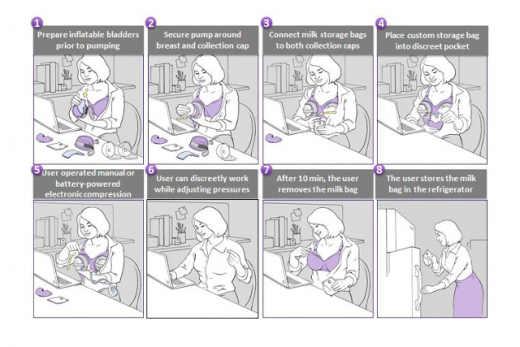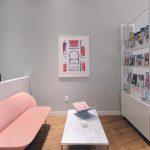can we build a better Breast Pump, Already?
the electrical dwelling breast pump was once invented in 1991. many women assume it’s time for an replace. here is how companies are innovating.
August 5, 2015
When Ayyana Chakravartula discovered she was pregnant for the first time, she borrowed a breast pump from a cousin of hers. Chakravartula, who has a PhD in mechanical engineering and lectures at the university of California, Berkeley, was once utterly stumped with the aid of the contraption that used to be put in front of her.
there were so numerous elements to the instrument that they had to be amassed in an immense cumbersome bag: there were adaptors, battery packs, bottles, ice packs, valves, tubes, and a cap that most likely hooked up to your breast. (It was once hard to tell needless to say: there was nothing at all that appeared intuitive to Chakravartula concerning the equipment.) the entire factor used to be analog, which used to be odd to her, given that every other device she owned used digital know-how.
“It was one of the strange experiences i’ve had in my life,” she recollects. “everything about the breast pump and the act of pumping milk felt weird.”
Chakravartula now has three youngsters underneath the age of six and works as a analysis scientist, so the previous few years of her existence have been a blur of sitting in workplaces and bathrooms pumping. And despite all this intimate expertise with the breast pump, she nonetheless hasn’t made peace with the instrument.
the issue With Pumping, And coverage
The patent for the first hand-operated breast pump goes the entire way again to 1854, but it wasn’t until 1981 that the first electrical breast pumps have been designed. They had been in the beginning created for sanatorium use, to assist mothers who had hassle breastfeeding or had premature infants. A decade later, electrical breast pumps for non-medical institution use had been invented by way of the Swiss manufacturer Medela, which is still the breast-pump industry chief. A slew of different companies, together with Ameda and Evenflow, have presented comparable an identical gadgets that rely on vacuum suction technology. Electrical breast pumps are actually widely to be had via most medical insurance plans.
Robyn Churchill, senior adviser on maternal and newborn well being within the Clinton health get admission to Initiative, has labored with tons of of breastfeeding moms over the past two decades, both in the us and all over the world. She factors out that American moms are particularly depending on breast pump expertise since the U.S. has the worst policies on maternity go away of any developed united states. in keeping with the U.N.’s global Labor group, the U.S., Oman, and Papua New Guinea are the one countries on the earth that don’t guarantee money advantages to women all over maternity go away. whereas bill Clinton’s 1993 domestic and clinical depart Act lets in girls to take 12 weeks of unpaid maternity leave with out dropping their jobs, this can be a relatively short break, in comparison with, say, Canada’s 35 weeks. And even for women who’ve the option of taking this time off, many ladies cannot afford to go with out creating wealth for so long.
“on this us of a, we situation a monetary burden on ladies to return to work before their bodies are absolutely recovered from being pregnant and are nonetheless chargeable for their child’s dietary needs,” Churchill says. “we are fundamentally interrupting the mummy-child dyad that from a biological standpoint, must nonetheless be one unit all over this era.”
In Churchill’s view, the breast pump was conceived as a easy, straightforward technique to this social downside, but if truth be told, many American moms she’s suggested struggle with pumping milk. amongst their complaints, they say that breast pumps are usually massive and inconvenient to carry around and have many elements that want to be sterilized. they are also noisy (some mothers say they can in fact hear breast pumps “talking to them” because of the repetitive mechanical sounds), and had been anthropomorphized as “frenemies” by moms who love with the ability to pump their very own milk but hate the real software and the time it requires.
many ladies in finding that pumping is far much less efficient than nursing, so they need to spend extra time doing it, which may also be hard at jobs that do not supply new moms versatile schedules. These are usually not inconsequential concerns for brand new moms, who may just already be exhausted from juggling full-time jobs and newborns at dwelling.
Nipple speak: still Taboo
The electrical breast pump is fundamentally a milk extraction tool, which Churchill says is an absolutely completely different mechanism than the best way a child nurses. A baby’s mouth yields milk rather more successfully than a pump. “the newborn does numerous compressing and massaging of the breast,” she says. “The pump’s vacuum suction mechanism is painful. women come in to peer me with cracked nipples, bruises, and abrasions from the use of breast pumps.” furthermore, simply being bodily with regards to one’s baby, listening to their cries, and smelling their skin triggers hormones that stimulate milk glide. whereas corporations at the moment are required with the aid of law to offer damage time and private area to nursing mothers, only greater corporations supply lactation rooms; most have makeshift solutions, like broom closets and conference rooms. that is the opposite of the nice and cozy, intimate breastfeeding expertise they might have with their baby, and might obstruct milk drift.
Churchill believes that there are lots of elements of the breast pump that may be greater, however there are additionally many impediments to this innovation process. it may still be regarded as embarrassing or taboo speaking about breast feeding and pumping, so the only people who truly remember the complexities of the process are mothers who’ve gone through the course of. “There wasn’t an alignment between the people who had been going through the issue and those who had the money or talents to create a better breast pump,” she says. “a part of solving this has to do with opening up the dialog.”
There are some signs that’s starting to occur. final week, as an example, news emerged that Donald Trump had referred to as a legal professional “disgusting” when she requested time to pump milk for her child; the huge outcry in the media gave Churchill hope that American society shouldn’t be only willing to address the difficulty of pumping head on, however to defend mothers who make a selection to do it.
Innovating The Pump
whereas the breast pump market is dominated through giant manufacturers like Medela and Evenflo, smaller, much less well-recognized corporations are making pumps the usage of know-how designed to extra closely simulate nursing.
Limerick, Inc., is a family-owned firm primarily based in Burbank, California, that used to be began by using Patricia Kelly, a registered dietician, and Joan Ortiz, a registered nurse, both of whom are additionally licensed lactation consultants. In 1992, when Kelly was nursing her first youngster, she realized that mothers like her have been suffering from pumping milk at work with existing breast pump expertise. Kelly and her mom first launched a place of job lactation application to lend a hand tutor working mothers through the breastfeeding course of. however this application provided them with a variety of insight into the specific ache factors that new mothers face.
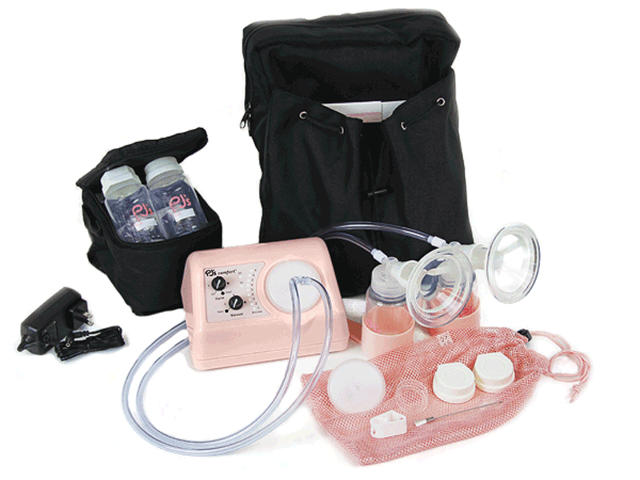
The made up our minds to take a stab at revamping the breast pump. solely self-funded, they employed a team of engineers to improve a prototype for a product that was once lighter, with fewer transferring components. most significantly, their pump has comfortable silicone breast cups that mimic the best way a child compresses the breast with its mouth (many pumps use hard plastic flanges and suction pumps that push and pull the breast and nipple to extract milk). After the long strategy of patenting their technology and getting FDA approval, they were ready to launch a line of electronic breast pumps that operate in a different way from the opposite suction pumps on the market. “The silicone cups should not just there to supply suction,” Kelly explains. “they also offer the compression that’s rather more similar to a child’s nursing pattern.”
last year, The Nightlight, a popular web site that independently experiences and researches baby merchandise, examined fifty five separate breast pumps and picked the Limerick PJ’s Bliss standard as their prime product. The web page’s reviewer mentioned that the silicone cups had been very relaxed, however possibly more importantly, they ended in a extra beneficiant milk go with the flow.
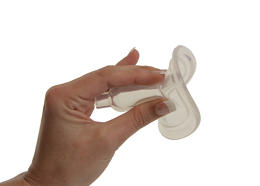
A 2011 find out about offered on the Academy of Breastfeeding medicine Annual meeting discovered that the Limerick pump is ready to effectively stimulate milk float that is on par with medical institution-grade breast pumps—which is striking, as a result of Limerick pumps are considerably smaller and lighter than those used in hospitals. The doctors who wrote the study mentioned that Limerick’s merchandise were a conceivable different to the more expensive pumps for mothers of infants in the neonatal ICU, who have a particularly tough time generating enough milk.
as of late, Limerick sells about 10,000 breast pumps a year, a small fraction of what its higher opponents promote. Kelly says that the Nighlight review gave the company a significant bump in sales, and she hopes that this increase will continue.
The Breast-Pump large Leagues
once I spoke to a Medela spokesperson, she explained that while the corporate did not have an “innovation lab,” it has scientists and researchers throughout quite a lot of markets constantly testing and iterating on its breast pump technology. (Ameda did not respond to requests for comment; Evenflo declined to be interviewed for this story.) The spokesperson points out that any innovation involving breast pumps takes time, partially as a result of traits want to meet with FDA approval sooner than they may be able to be introduced to the market.
over the last twenty years, Medela has not basically altered the suction technology of its breast pump, but has all in favour of making it work more smoothly and successfully to optimize moms’ milk output and luxury. for example, it has been gaining knowledge of the actual needs of mothers of preterm babies, who can in finding breastfeeding a big challenge, and has lately launched a product that helps moms of premature infants to offer more milk output in less time. whereas Medela is just not ruling out the potential for growing an alternative way to expressing breast milk, it does now not have any quick merchandise with radically different know-how to announce.
while the fundamental functionality of breast pumps hasn’t modified so much through the years, Medela is trying to harness know-how in different how you can beef up mothers. the company has just launched an iPhone app designed to be a associate to nursing mothers, allowing them to enter precisely how so much milk they have got expressed day by day so they are able to monitor their milk flow over time. The free app, which does no longer require the acquisition of a Medela pump, also gives troubleshooting advice and inspiring messages tailored to different factors in the breastfeeding experience, such as the day a mom needs to come to work. the company additionally has a “Breastfeeding university” that provides educational videos and lessons to moms at a price of $25.
The Tinkerers
Barring any radical innovations from centered gamers within the pump trade, some moms are taking things into their very own hands. Chakravartula and her fellow U.C. Berkeley lecturer in mechanical engineering, Jocelyn Bale-Glickman, are at the moment engaged on building a pump that is lighter, smaller, quieter, and has fewer moving components. together, they’ve worked on a prototype for an enhanced software that they envision as the Apple of breast pumps: a smaller, sexier, cleaner laptop. rather than analog controls, Chakravartula says the pump could have a corresponding app that tracks how a lot milk has been accumulated and suggests the appropriate time for the following pumping session. Chakravartula and Bale-Glickman are starting to look for traders of their new venture.
some other firm referred to as Naya health is launching a product in September that’s hoping to accomplish among the related goals as Chakravartula and her partner. whereas the company just isn’t disclosing small print in regards to the pump, a consultant says that quite a few attention has been paid to the design of the instrument: it’s going to be mild, sleek, and modern, and it’s going to also be digital.
final year’s Breast Pump Hackathon at MIT (which fast firm lined here), capitalized on the growing consensus that the breast pump because it at present exists is deeply improper. The tagline for the event was once, “Make the Breast Pump now not Suck.” Over the course of a weekend, folks from a wide range of disciplines—biologists, lactation consultants, engineers, developers—gathered together to search out new techniques to the breast pump. solutions ranged from allowing moms to odor their baby’s scent while pumping to stimulate more milk waft to altering the very mechanism of the pump.
Susan Thompson, a mechanical engineer and mom of two, led one of the crucial winning teams on the hackathon. Her design for a reimagined breast pump gained each the Pioneer Award and the popular Vote. Her plan used to be to basically rethink the mechanics of the present breast pump and create a tool that depends now not simply on suction, but also on compression, which she believes can significantly elevate milk output in nursing girls. during the last 10 months, she’s persevered to tweak her prototype thru her new company, Kohana, with the intention of turning her concept right into a market-ready product.
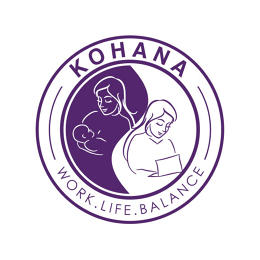
Thompson’s invention, called the Gala Pump, makes use of a compression methodology similar to Limerick’s. then again, her device is designed for use arms free and beneath clothing. It entails placing digital caps on the breasts that use compression and suction concurrently; milk is then accumulated in round storage luggage. When sufficient milk is expressed, the luggage will also be taken out and refrigerated.
Thompson has already examined the product on breastfeeding moms and is making ready a trial to match the overall milk volumes expressed over quarter-hour from her compression pump with the standard vacuum breast pumps on the market. She has labored with consultants within the box to design this experiment and has collaborated with Northeast Biomedical, a clinical tool company, to fabricate the prototypes that the themes will use. In complete, the trial is about to value $a hundred and ten,000.
although there is an enormous marketplace for a greater breast pump and a leap forward in this expertise could be very profitable, some of the major challenges to innovating in this house is acquiring funding, which is why Thompson is opting to crowdfund her mission, as a minimum at this early stage. Thompson factors out that except you’ve personally experienced the challenges of breast pumps, it may be arduous to bear in mind exactly how unpleasant the method may also be. provided that just 4.8% of investing partners in mission capital are women, it can be exhausting to persuade a room filled with men to invest in a new breast-pump concept.
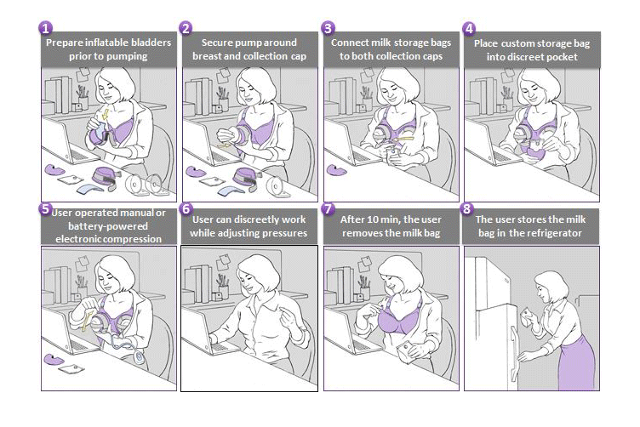
alternatively, Thompson is hopeful that attitudes within the VC group are changing. both Thompson and Chakravartula are planning to pitch buyers on their breast pump concepts when they’re additional along on their respective projects and have established their proofs of idea. Thompson, for one, thinks that males are slowly beginning to take note the ache points of pumping as they watch their other halves experience the process. “Any male investor whose spouse has used a breast pump will get how demanding it’s,” Thompson tells me. “i think there shall be increasingly more men in this class who are willing to hear us out.”
(249)

